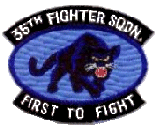In 1964, British pop star Petula Clark went to the top of the charts with her hit song “Downtown.” If you’re my age, then the tune is familiar but the song is a classic and various forms are trotted out periodically. There is a current commercial which uses “Downtown” as its background musical theme.
About the same time that the song was first released, Operation Rolling Thunder was initiated in the skies over North Vietnam. For three years, the Johnson Administration sent Air Force and Navy fighters over North Vietnam to bomb selected targets. The theory behind Rolling Thunder was that we would send a message to Ho Chi Minh and the Vietnamese communists that we were really serious and if they would stop their aggression against South Vietnam, we would stop the bombing. Rolling Thunder lasted for three years until early 1968 and was unsuccessful in its political objective.
The Pacific Command (PACOM) air planners divided North Vietnam into six regions which they named Route Packages. They were numbered sequentially from south to north. Route Pack VI was the large industrial heartland of North Vietnam, bisected by the Red River Valley. This route package was divided into two sub regions: Route Pack VI Bravo included the port city of Haiphong and was the primary responsibility of the Navy and their 7th Fleet air wings.
Route Pack VI Alpha included the capital of Hanoi and was the primary responsibility of the Air Force wings operating from bases in South Vietnam and Thailand. The fighter pilots who flew into VI Alpha to attack targets around Hanoi referred to this as “Downtown.” It had the reputation as the most heavily defended air space in the history of warfare, protected by a layered system of interceptors, surface to air missiles, and anti-aircraft artillery.
After three years, LBJ halted Rolling Thunder in an effort to bring the North Vietnamese to the bargaining table. Over the next four years, we stayed out of North Vietnamese airspace, however when the Communists launched their Spring Offensive with 200,000 troops in 1972, the only way to stop the onslaught was with airpower.
At the time, I was a lieutenant newly assigned to the 35th Tactical Fighter Squadron “Panthers” at Kunsan AB, South Korea. On April Fools Day, our 18 F-4D Phantoms deployed to Southeast Asia, the first of many Air Force, Navy and Marine squadrons to join the fray.
Our supposedly “quick” period of temporary duty lasted 196 days. We flew first from DaNang AB, South Vietnam until mid-June and then moved to Korat AB, Thailand. During that period of time, I flew 121 combat missions, 78 of which were flown over South Vietnam primarily in close air support of ground units in contact with the enemy. I flew 43 missions over North Vietnam including 16 “Downtown.” Without exception, these Linebacker missions over Hanoi were the most hazardous I faced.
Generally we flew at about 15 thousand feet and kept our speed above 480 knots where our energy gave us good maneuverability to defeat the SA-2 Guideline surface-to-air missiles. If we carried a centerline fuel tank, we drained that first and jettisoned the sluggish tank. As a result, our jet was cleaner, lighter and more maneuverable.
Most of my missions “Downtown” were escort missions for the bombers, so we were light and maneuverable, ready to tangle with any MiGs that might interfere. On the few occasions where we carried bombs, we were quite heavy until the ordnance was cleaned off the aircraft. We would ripple all twelve 500-pound bombs on a single attack; our motto was “one pass and haul a**.”
My closest encounter with the enemy came during a late summer mission. We escorted Oak Flight from Ubon that dropped seven laser-guided 2000 pound bombs on Gia Lam just east of Hanoi. We made a wide sweeping turn north of Hanoi over the lake where John McCain went swimming five years earlier. The gun positions on the south side of the lake put up a lot of flak, but no one in our flight was hit. Exiting the target area to the southwest, my radar warning receiver lit up indicating a SAM was headed our way. The cumulous clouds below us made picking up the missile difficult. At the last possible moment our lead aircraft saw the streaking SAM and called for Finch 4 (my aircraft) to break right. Our 5-G barrel roll was successful in dodging the missile. Close but no cigar!
So go downtown, things will be great when you’re Downtown – don’t wait a minute for Downtown – everything’s waiting for you.
Petula Clark
[/fusion_builder_column][/fusion_builder_row][/fusion_builder_container]

There is a music group that I’m not sure are still together called They might be Giants. They might be giant is what I think of whenever I read about those guys going downtown in North Vietnam. What brave men!
Which I could get the cockpit audio of some of those flights.
You know I was listening to Pet Clarke sing Downtown for the first time in a long time and all I could think of all the American flyboys that went “Downtown” I’m jazzed to see the association made with the song.